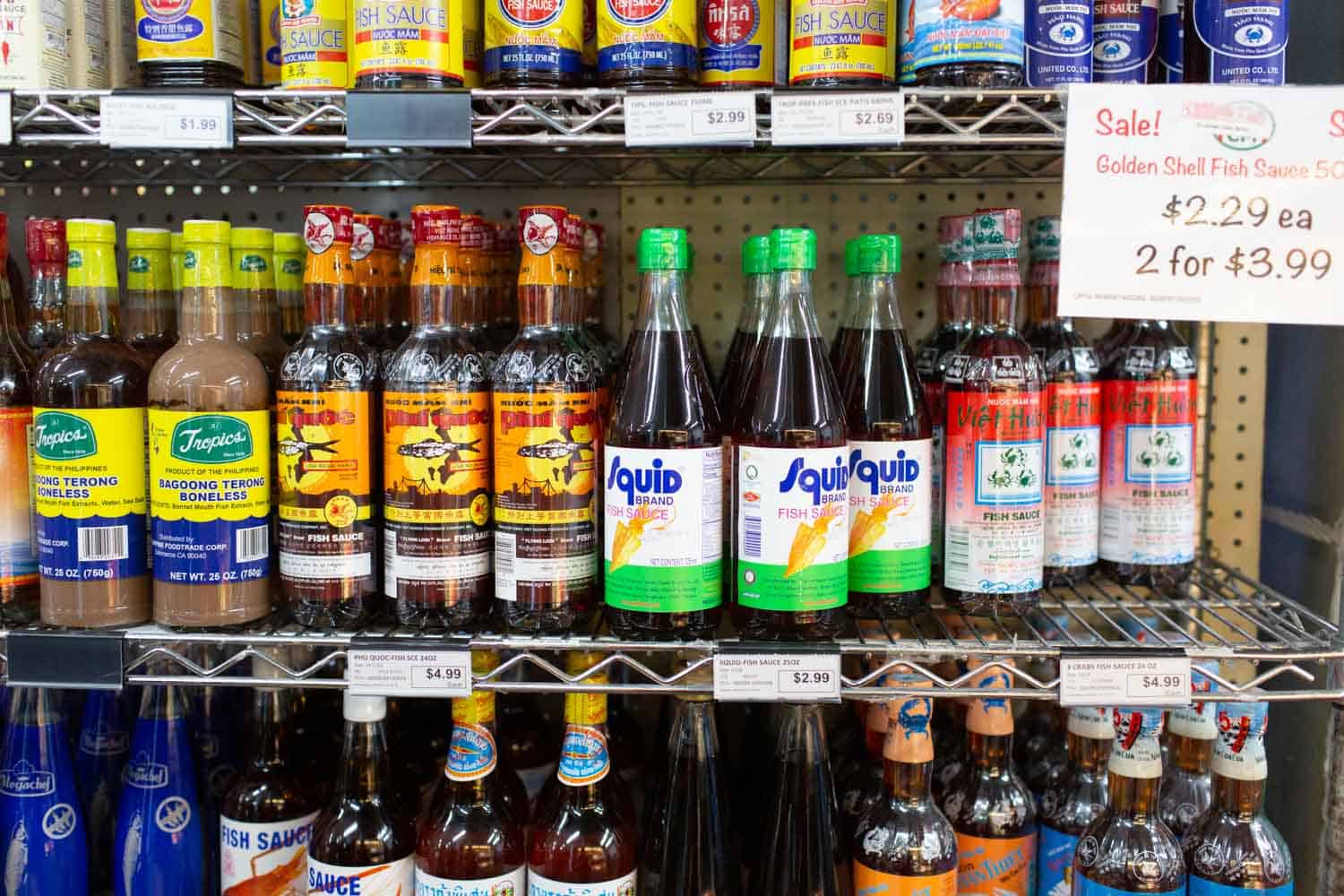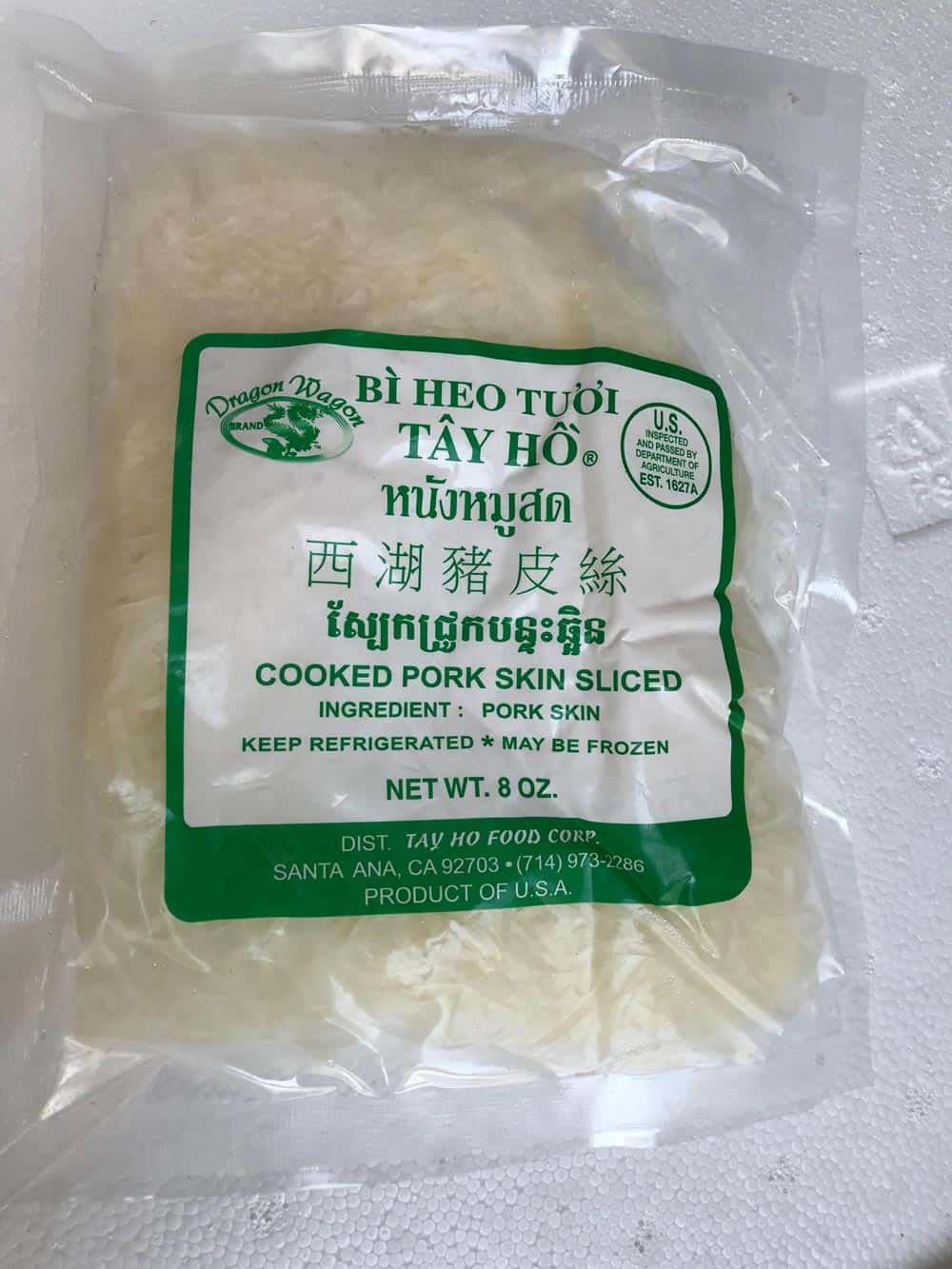Learn about how to make authentic Lao jeow bong, a spicy, sweet, and savory dipping paste that can be an accompanied with sticky rice, grilled meats, and vegetables for a bold kick of flavor.
Laos chili paste known as jeow bong is a very popular due to its spicy, sweet, and umami blend that is perfect for dipping sticky rice. It is a versatile paste that can also be used for cooking in stir fries, soups, and even as a marinade. In this post, I'm going to talk all about this jeow bong, share with you the variations of this recipe you'll find online, and how to make this truly distinct paste right at home wherever you are at.
All About Jeow Bong
Jeow bong (also often referred to as jaew bong) is an earthy, sweet, savory Lao chili paste that is traditionally prepared with dry chili peppers, garlic, shallots, galangal, fish sauce, and buffalo skin.

Where did jeow bong originate from?
Jeow bong is a delicious spicy, sweet Lao dipping sauce originating in the Northeastern menus of Luang Prabang, which is located near the Mekong River. It often is eaten with sticky rice and other fresh vegetables.
What does jeow bong taste like?
Jeow has an intense, sweet, spicy earthy taste due to the use of chilies, garlic, shallots, and galangal. It is often paired with blander accompaniments like sticky rice or vegetables that are dipped into the paste to add richness and flavor. When the dipping sauce is paired with sticky rice, the spicy, bold flavors are tempered with the sticky rice, but allows the ubiquitous flavors to stick to the rice, bringing the umami flavors together.
The heat of the paste is not too fiery, but does definitely have a kick. Recipes can usually be adjusted by excluding the amount of dry chiles used in the dish.

What are other names for Lao Jeow Bong?
Due to the translations from Lao script to English writing, this traditional Lao paste can be found under the following monikers:
- Luang Prabang chili sauce
- Jeow Bong
- Jaow Bong
- Jaew Bong
- Jaeo Bong
- Jel Bong
- Gel Bong
How do you pronounce Laos jeow bong Dipping Sauce?
Jeow Bong is pronounced like "cheo" which rhymes with "gel". Bong is pronounced "bong".
What does jeow bong mean in Lao language?
Jeow collectively means dips, sauces, and relishes in Lao while bong means pickled. While jeow bong itself is not a pickle, the name originated with bong because the paste can last a long time kind of like a pickle.
the paste does keep for a long time, which is why this recipe has the name.
What is Lao spicy chili paste served and eaten with?
Most commonly, Lao jeow bong with khao niew (sticky rice), sai kok (pork sausage recipe), steamed fish, vegetables, and grilled meats. Traditionally in Laos, jeow bong can also be accompanied with grilled river algae sheets known as kai paen (kai phene) and grilled gee sin lod beef.
Asian Grocery Store List for Jeow Bong
When visiting your local Asian market, you should be able to find all of the ingredients in one stop. Below are some of the ingredients you'll definitely. want to seek out at your specialty Asian grocer because they may not be found at your local grocer.

Palm Sugar (or Coconut Sugar)
Palm sugar can be found in the aisle generally next to other canned goods or premade sauces. This is the brand I prefer. If you can get coconut sugar, I highly recommend this (but it's often hard to come by).

Shallots
You'll be happy to note that shallots are really inexpensive at your local Asian grocer. It will boggle your mind how cheap shallots (and even other herbs and produce) cost at these specialty stores.
Fish Sauce
You can use padaek, which is fermented fish sauce. However, I would recommend going with filtered fish sauce if you are being introduced to Lao cuisine for the firs time. Padaek might scare you to due to the pungent aroma. I would recommend going with filtered fish sauce, with my favorite brand being this one.

Cooked Sliced Pork Skin
You'll find shredded, sliced pork skin in the refrigerated or freezer aisle of your local grocer. Make sure you get the cooked kind. All you'll need to do when you get home is completely dethaw, wash, and dry it and you should be good to go.

Galangal
Galangal is a root vegetable that is used in Asian cooking that is a blend between garlic, shallots, and ginger.

Thai Dried Chili Pepper
This is my favorite brand to use. You'll want to get a big bag of these for this delicious dish. Anything you don't use, you can grind and make pepper flakes to add on top of your favorite foods that you normally use red pepper flakes for. There are long and short versions. The shorter versions of Thai dried chili peppers are spicier and have a bit more kick. You'll want to have both packages!

Tamarind Paste
You'll want to also grab a jar of tamarind paste.
Tips and Tricks Before Making Jeow Bong Dipping Paste
To Use or Not Use Fish Sauce
To make it authentic and truly traditional, you should use fermented fish sauce, which can give it a very pungent aroma. I prefer removing this when serving to my kids and grandkids. When it is my husband and I, I will include padaek. The trademarks that this dipping sauce is known for is it's spicyness and sweetness, not necessarily the use of padaek. This means that the chili paste and the palm sugar are definitely important aspects of this recipe.
Ice Water with Jeow Bong
When serving jeow bong, make sure that not only should you have sticky rice and fresh vegetables, you should also have ice water ready to go due to the heat of the dish.
Jeow Bong Ingredient Recipe Measurements
While this recipe does include specific measurements, most Lao cooks would adjust the measurements based on taste and instinct once they understand the ingredients needed for the recipe. This recipe is versatile enough that you can adjust the ingredients to your liking.
Mortar and Pestle versus Processor
This recipe is often made using a mortar and pestle traditionally. If you don't have one, the next best thing is to use a food processor.
Variations of Jeow Bong from Laos
The authentic ingredients used in jeow bong usually includes dried red chili peppers, galangal, shallots, cilantro, and dried water-buffalo skin with other variations that include palm sugar, shrimp, filtered fish sauce, and even unfiltered fish sauce known as padaek.
There are also versions that include frying jeow bong in a skillet, but this is not the authentic, traditional way of making this recipe.
How to Make Authentic Jeow Bong Recipe
This is a delicious paste that has a balanced blend of ingredients that make it unique, distinct and delicious when paired with sticky rice.
Ingredients for Jeow Bong Dipping Sauce

- 2 tablespoons of palm sugar
- 2 tablespoons of tamarind juice
- 2 tablespoons of fish sauce
- ½ tablespoon of salt
- ½ cup of cooked, sliced pork skin
- 1 cup of Thai dried chili peppers, long version
- 1 cup of Thai dried chili peppers, short version
- 1 cup of shallots, peeled
- 1 cup of garlic, peeled
- ½ cup of galangal, sliced
Instructions for Making Jeow Bong Dipping Sauce
- Roast the shallots, garlic, and galangal until darkened and cooked through.
- On a heated skillet on the stove, roast the long and short Thai dried chili peppers until it's aromatic. Remove from heat.
- Add the roasted chiles into the mortar and pestle and pound, grind.
- Next, add in shallots, garlic, and galangal and continue grinding.
- Once ground, add in palm sugar, tamarind juice, fish sauce, and salt. Continue grinding until it forms a paste.
- Cut the pork skin into ½ inch strings. Add into a large bowl. Transfer the paste into the bowl with the pork skin.
- Combine and mix together.
- Serve with sticky rice, fresh vegetables, and grilled meats.
Preserving Jeow Dipping Recipe
Jeow bong can be preserved in an airtight container for up to 30 days (sometimes even longer if preserved appropriately).

Frequently Asked Questions About Jeow Bong Recipe
What are other types of jeows?
Traditionally, the category of Lao jeows generally refers to most sauces, relishes, and dips used in Lao cuisine. There are a few major subcategories of jeow dipping sauces that are popular in Laos, which include:
- Jeow Mak Len
- Jeow Bong
- Jeow Het (mushroom)
- Jeow Artichoke
What else can jeow bong be used for?
Jeow bong can also be used to add additional flavors to soups, marinades, and even for frying rice.
Summary About Jeow Bong Recipe
Jeow Bong is a Lao traditional paste that is versatile, warming and distinctively unique to the region. Due to it's bold flavors and ability to be paired with just about anything, jeow bong is a favorite among natives of Lao as well as visitors to the beautiful country. Without even traveling there, you can make this recipe on your own and tweak it to your own personal tastes.
Other Recipes from Laos You Might Like
Here are some other Lao recipes that you might like:
- Laos Larb Gai - Chicken Minced Meat Salad
- Laos Jaew Mak Len - Tomato Dipping Sauce
- Laos Jaew Het - Mushroom Dipping Sauce
- Laos Jaew Nam Jim - Fish Sauce Dipping Sauce
- Laos Khao Niew - Sticky Rice
- Laos Sai Kok - Spicy Pork Sausage
- Laos Yam Pla-Muek - Squid Salad
- Laos Fried Quail

Authentic Lao Jeow Bong - Chili Paste Dipping Sauce
Jeow Bong is a Lao traditional paste that is versatile, warming and distinctively unique to the region. Due to it's bold flavors and ability to be paired with just about anything.
Ingredients
- 2 tablespoons of palm sugar
- 2 tablespoons of tamarind juice
- 2 tablespoons of fish sauce
- ½ tablespoon of salt
- ½ cup of cooked, sliced pork skin
- 1 cup of Thai dried chili peppers, long version
- 1 cup of Thai dried chili peppers, short version
- 1 cup of shallots, peeled
- 1 cup of garlic, peeled
- ½ cup of galangal, sliced
Instructions
<ol><li>Roast the shallots, garlic, and galangal until darkened and cooked through.</li><li>On a heated skillet on the stove, roast the long and short Thai dried chili peppers until it's aromatic. Remove from heat.</li><li>Add the roasted chiles into the mortar and pestle and pound, grind.</li><li>Next, add in shallots, garlic, and galangal and continue grinding.</li><li>Once ground, add in palm sugar, tamarind juice, fish sauce, and salt. Continue grinding until it forms a paste.</li><li>Cut the pork skin into ½ inch strings. Add into a large bowl. Transfer the paste into the bowl with the pork skin.</li><li>Combine and mix together.</li><li>Serve with sticky rice, fresh vegetables, and grilled meats.</li></ol>
Recommended Products
As an Amazon Associate and member of other affiliate programs, I earn from qualifying purchases.
Nutrition Information:
Yield: 6 Serving Size: 1Amount Per Serving: Calories: 151Total Fat: 3gSaturated Fat: 1gTrans Fat: 0gUnsaturated Fat: 2gCholesterol: 5mgSodium: 1117mgCarbohydrates: 27gFiber: 5gSugar: 13gProtein: 7g

